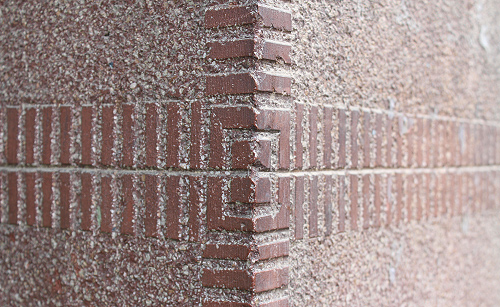The modernist architecture, especially its styles that appeared after mid-1920s, is characterized by complete absence of decorative non-functional elements. Probably, the only décor that was present at modernist buildings was hardly visible ornamental stripe that was applied on the edges of façade walls, around the windows and portals. This delicate décor is called faux stone (Czech – umělý kámen). The faux stonework decoration might be referred to the most labour-intensive and at the same time the most elegant methods of façade surface finishing.
The base was made of special mixture of cement and crushed stone.
After hardening of the finishing, the stonecutters removed the smooth covering layer using bush hammer or other striking tools, thus exposing the grainy stone structure of the plaster. On the ribs of structural elements the covering layer was processed with flat chisels in order to imitate the notches of natural stone.
In Uzhhorod, the faux stone decoration is primarily seen on in red, yellow, white and grey nuanced tones. The depth of the relief – i.e. the difference between smooth covering layer and bush-hammered surface – is about 2-5 mm.

